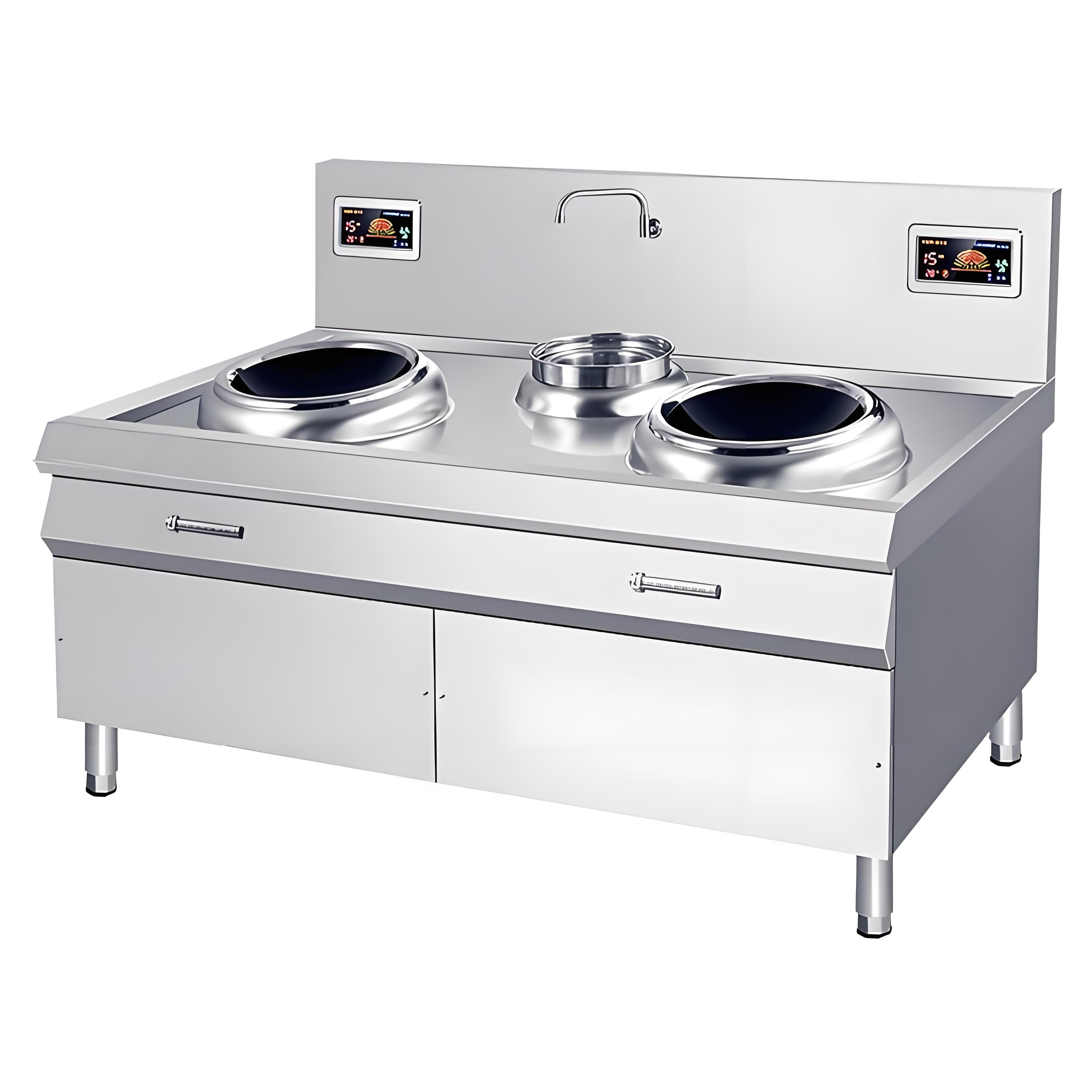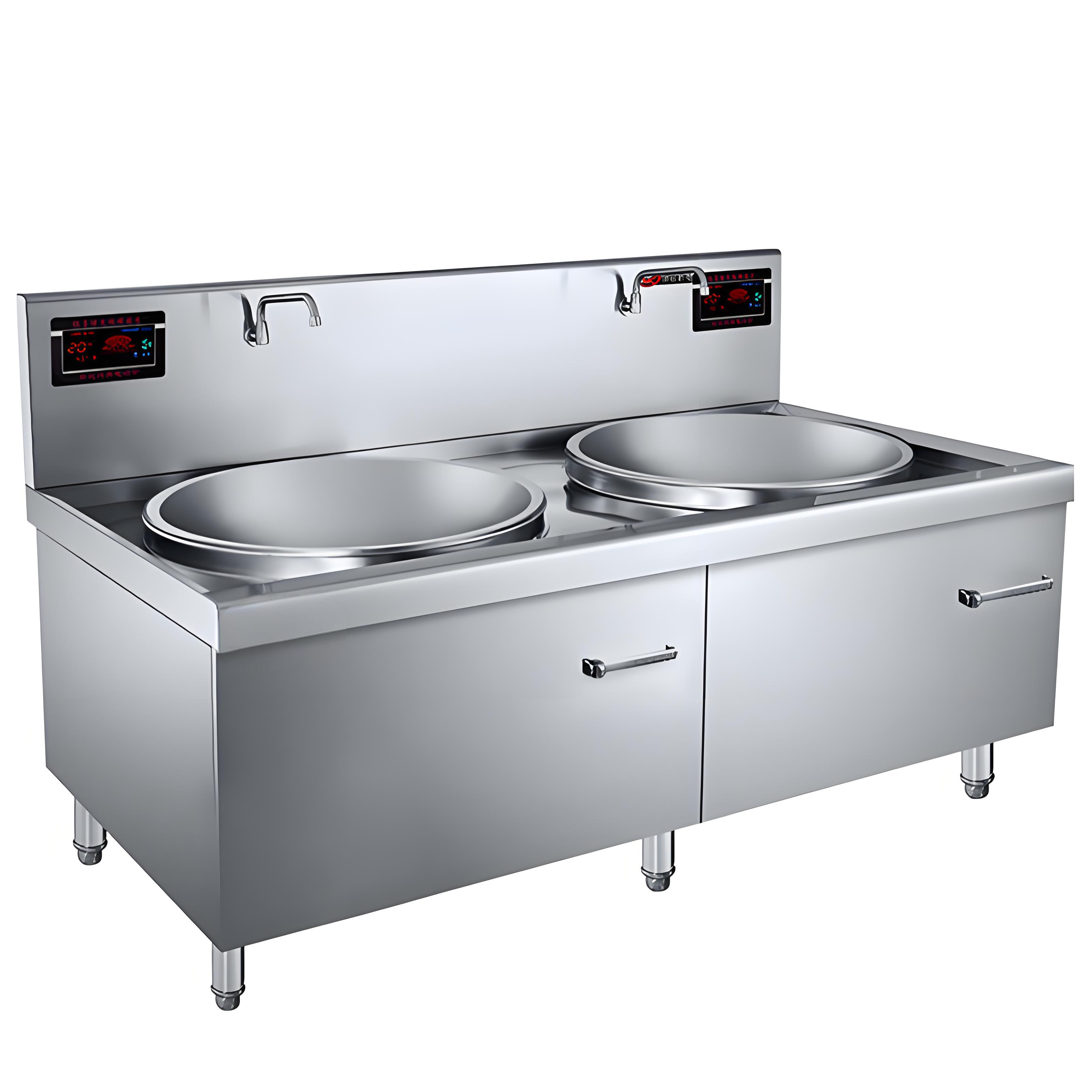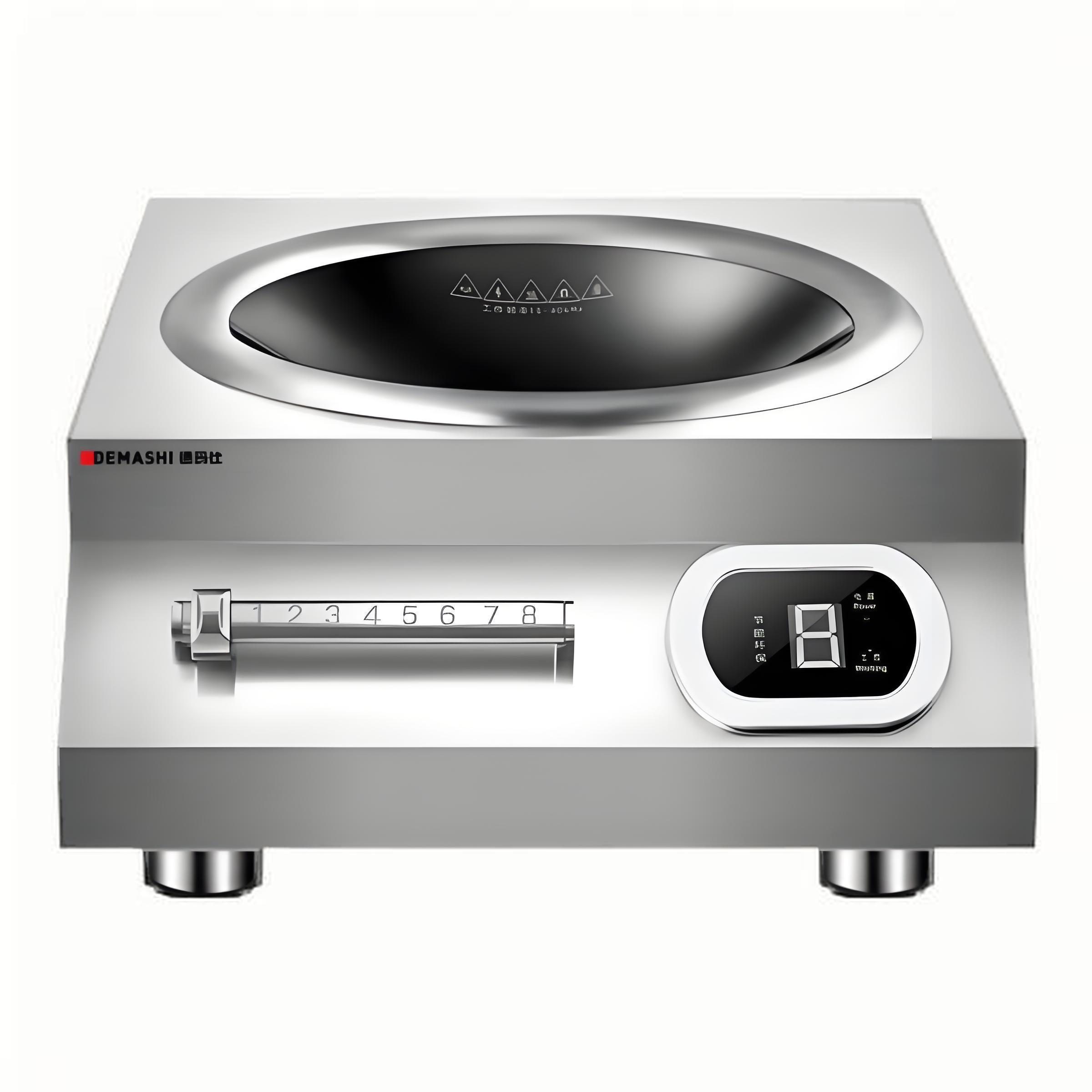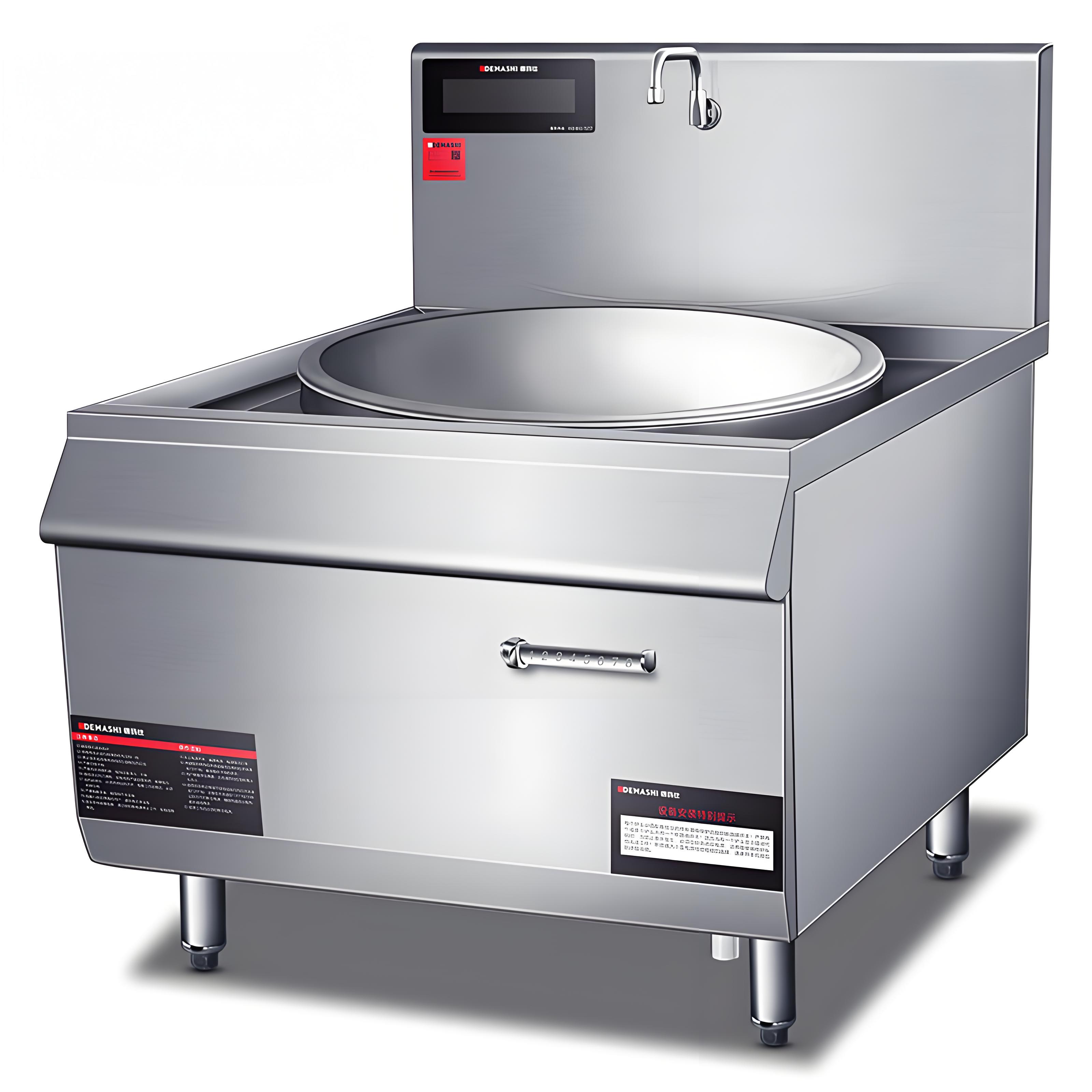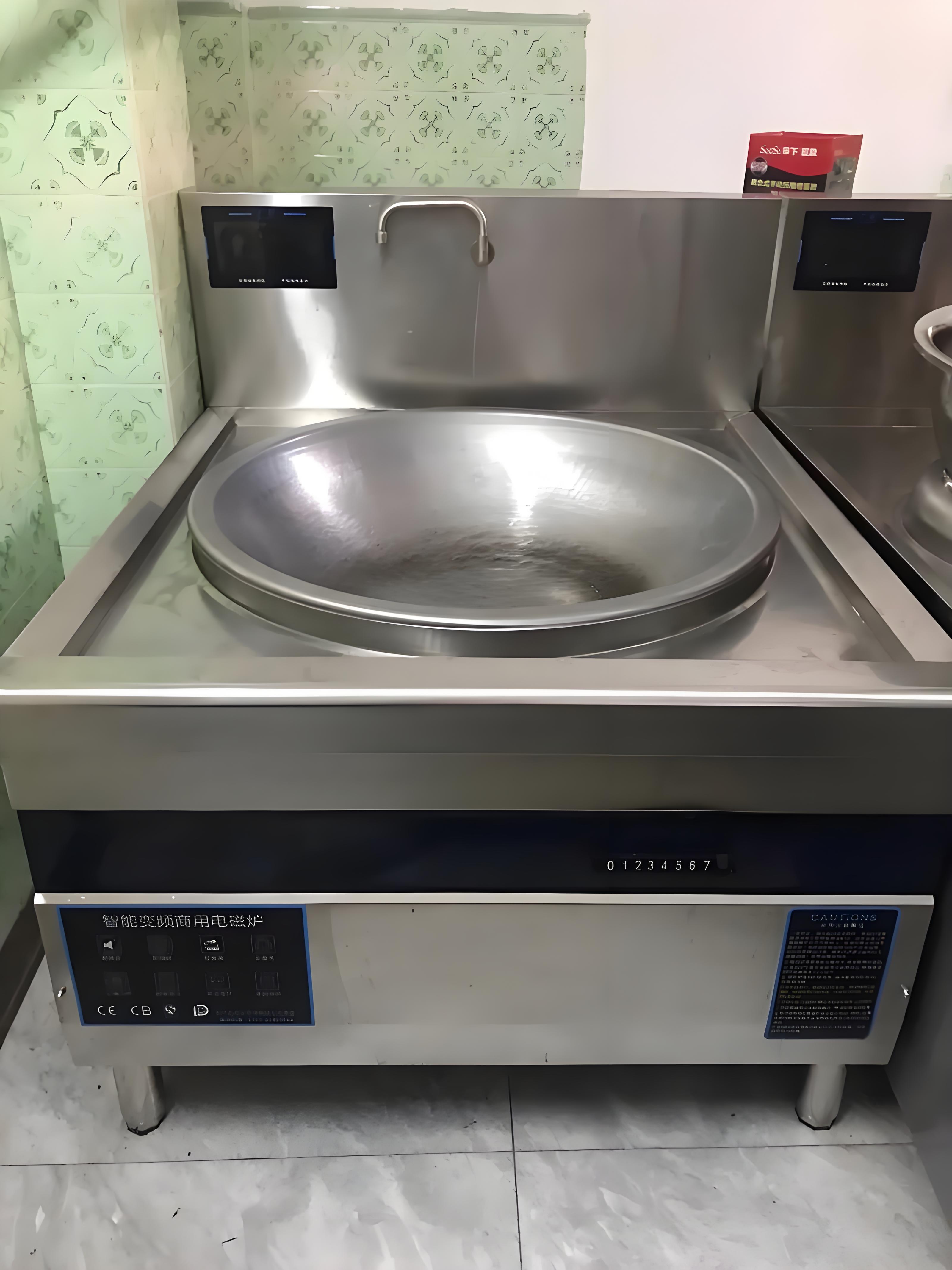Commercial induction cooktops are a must-have in the hustle and bustle of commercial kitchens. They are efficient, fast, precise, and loved by chefs and restaurateurs. However, like any appliance, they can experience problems, and one of the most common problems is a malfunctioning switch. Today I am here to share my insights and help you understand the possible reasons behind a malfunctioning commercial induction cooktop switch.
1. Understanding the Commercial Induction Cooker Switch
The Role of the Switch
The switch on a commercial induction cooker is a crucial component. It serves as the interface between the user and the cooker’s electrical system. When you turn the switch on, it sends a signal to the control board, which then activates the induction coil, generating the magnetic field that heats up the cookware. A well – functioning switch ensures that you can easily start and stop the cooker, adjust the power levels, and control other functions as needed.
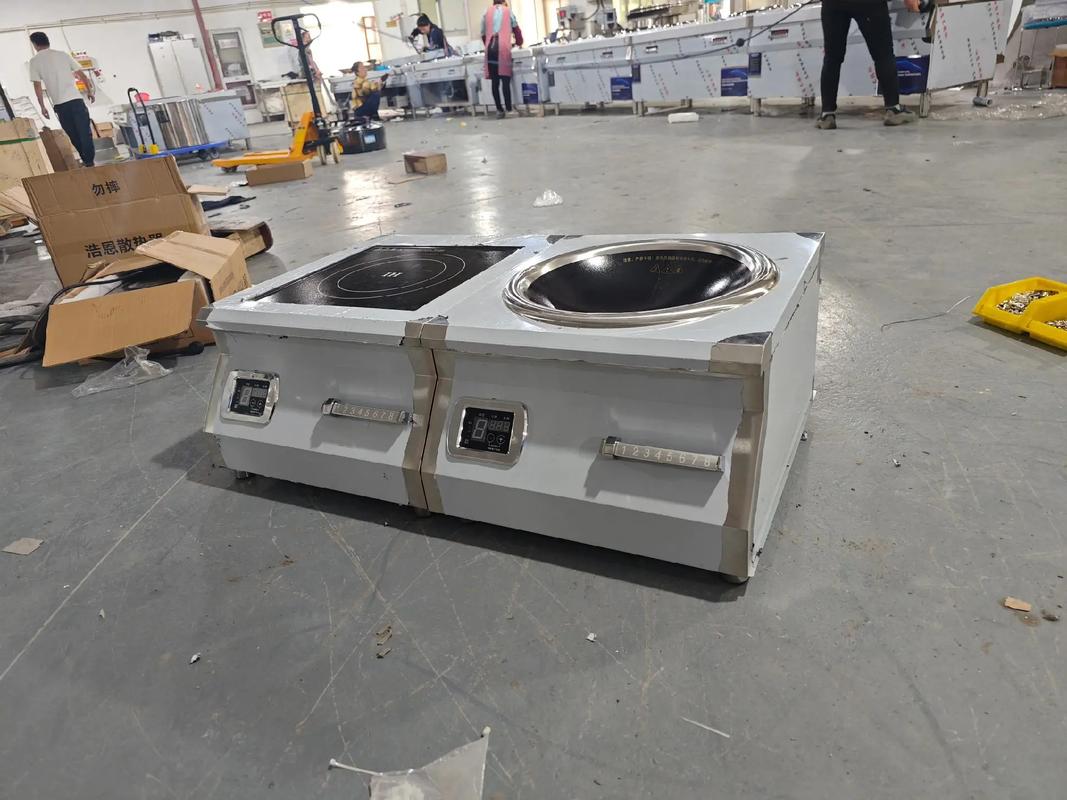
Types of Switches
There are generally two main types of switches used in commercial induction cookers: mechanical switches and touch – sensitive switches. Mechanical switches have physical buttons or knobs that you press or turn to operate the cooker. They are durable and can withstand heavy use, but they may wear out over time due to constant physical contact. Touch – sensitive switches, on the other hand, are operated by touching the surface of the cooker. They offer a sleek and modern look, but they can be more sensitive to environmental factors such as moisture and static electricity.
2. Common Causes of Switch Failure
Wear and Tear
Mechanical switches are particularly prone to wear and tear. With frequent use, the internal components of the switch, such as the springs, contacts, and buttons, can become worn out. For example, the springs may lose their elasticity, making it difficult to press the button or causing it to stick. The contacts may also wear down, leading to poor electrical conductivity and resulting in a switch that doesn’t work properly.
In a busy commercial kitchen, an induction cooker can be used multiple times a day, every day. Over time, this constant use takes a toll on the switch. If you notice that the switch is becoming harder to press or that it’s not responding as it should, wear and tear is likely the culprit.
Electrical Issues
Electrical problems can also cause switch failures. Loose connections within the switch or between the switch and the control board can disrupt the flow of electricity, preventing the switch from functioning correctly. For instance, if a wire becomes loose or disconnected, the electrical signal may not reach the control board, and the cooker won’t turn on.
Another electrical issue could be a short circuit. This can occur if there is a fault in the wiring or if moisture gets into the switch, causing a direct connection between the positive and negative terminals. A short circuit can not only render the switch useless but also pose a safety hazard, potentially causing electrical fires or damage to other components of the induction cooker.

Water and Moisture Damage
Commercial kitchens are often wet and humid environments. Water splashes, steam, and spills are common occurrences. If water or moisture gets into the switch, it can cause significant damage. Corrosion can set in on the electrical contacts inside the switch, leading to poor conductivity. The moisture can also cause the switch to short – circuit, as mentioned earlier.
Even a small amount of water can be enough to cause problems. For example, if a chef accidentally spills a glass of water near the induction cooker and some of it seeps into the switch, it may start to malfunction immediately or develop issues over time.
Dust and Debris Buildup
Dust, food particles, and other debris can accumulate in and around the switch over time. This buildup can interfere with the switch’s operation. For mechanical switches, the debris can get stuck in the gaps between the buttons or knobs and the housing, making it difficult to press or turn them. In the case of touch – sensitive switches, dust and debris can create a barrier between your finger and the sensor, preventing the switch from detecting your touch.
In a commercial kitchen, where there is a lot of activity and food preparation, dust and debris are inevitable. Regular cleaning is essential to prevent this buildup from causing switch problems.
Software or Control Board Problems
For induction cookers with touch – sensitive switches, software issues can also be a factor. The switch’s operation is often controlled by a software program on the cooker’s control board. If there is a bug or glitch in the software, the switch may not respond correctly to your touches. For example, it may not register a touch at all, or it may register multiple touches when you only touch it once.
Additionally, a faulty control board can affect the switch’s performance. The control board is responsible for processing the signals from the switch and controlling the cooker’s functions. If the control board is damaged or malfunctioning, it may not be able to communicate properly with the switch, leading to switch failure.

Common Causes of Switch Failure Table
| Cause | Description | Impact on Switch |
|---|---|---|
| Wear and Tear | Frequent use causes internal components to wear out | Difficulty in pressing/turning, poor conductivity |
| Electrical Issues | Loose connections or short circuits disrupt electrical flow | Switch doesn’t work, potential safety hazards |
| Water and Moisture Damage | Moisture causes corrosion and short circuits | Poor conductivity, switch malfunction |
| Dust and Debris Buildup | Accumulation interferes with switch operation | Stuck buttons/knobs, touch – sensitive switches don’t detect touches |
| Software or Control Board Problems | Bugs in software or faulty control board affect communication | Unresponsive switch, multiple touch registrations |
3. Diagnosing the Problem
Visual Inspection
The first step in diagnosing a switch failure is to perform a visual inspection. Look for any obvious signs of damage, such as cracked buttons, loose wires, or water stains around the switch. If you notice any of these signs, it can give you a clue as to what might be causing the problem.
For example, if you see a loose wire connected to the switch, it’s likely that the electrical connection is disrupted, and this could be the reason why the switch isn’t working.
Testing the Switch
You can also test the switch to see if it’s receiving and sending the correct electrical signals. This usually requires a multimeter, a tool that measures voltage, current, and resistance. With the power to the induction cooker turned off, you can disconnect the switch from the control board and use the multimeter to test the continuity of the switch’s contacts.
If the multimeter shows that there is no continuity when the switch is supposed to be closed (i.e., when you press the button or touch the sensor), then the switch is likely faulty.
Checking for Environmental Factors
Consider the environmental conditions in the kitchen. Has there been a recent spill or increase in humidity? If so, water or moisture damage could be the cause of the switch failure. Also, check if there is a lot of dust or debris around the switch. If so, cleaning it may resolve the issue.
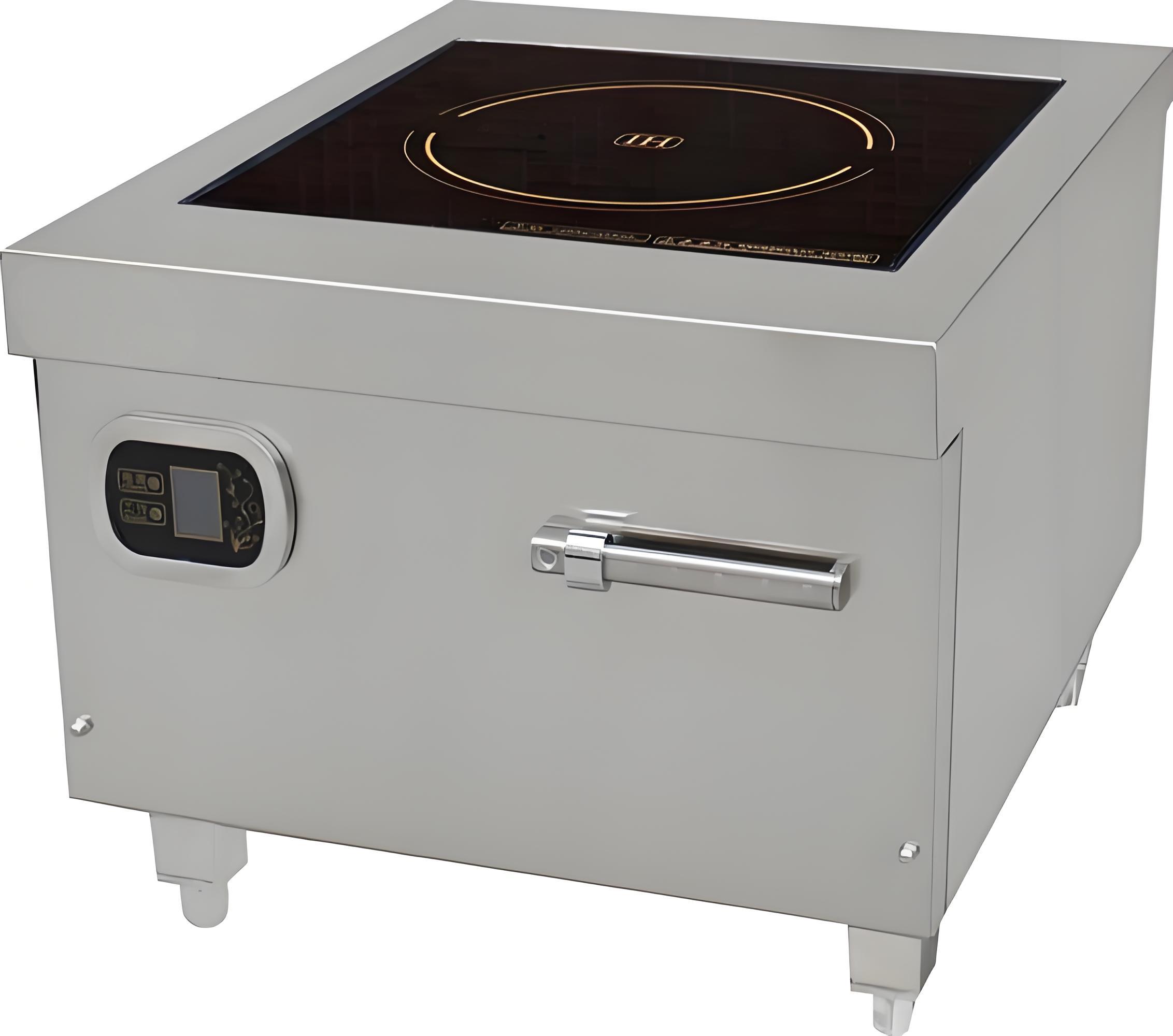
4. Solutions to Switch Failure
Replacing the Switch
If the switch is worn out, damaged, or not functioning properly due to wear and tear, electrical issues, or water damage, the most straightforward solution is to replace it. You can purchase a replacement switch from the manufacturer or a reputable supplier. Make sure to get a switch that is compatible with your specific model of commercial induction cooker.
Replacing a mechanical switch usually involves unscrewing the old switch from the cooker’s housing, disconnecting the wires, and then installing the new switch in reverse order. For touch – sensitive switches, the process may be a bit more complex, and you may need to follow the manufacturer’s instructions carefully.
Fixing Electrical Issues
If the switch failure is due to loose connections or a short circuit, you’ll need to fix the electrical problem. For loose connections, simply tighten the screws or connectors that hold the wires in place. If there is a short circuit, you’ll need to identify the source of the short and repair or replace the damaged wiring.
It’s important to turn off the power to the induction cooker before attempting any electrical repairs to avoid the risk of electric shock. If you’re not comfortable working with electrical components, it’s best to hire a qualified electrician.
Addressing Water and Moisture Damage
If water or moisture has damaged the switch, you’ll need to dry out the area thoroughly. Use a clean, dry cloth to wipe away any visible moisture. You can also use a hairdryer on a low – heat setting to help speed up the drying process, but be careful not to overheat the components.
Once the area is dry, inspect the switch for any signs of corrosion. If there is corrosion, you may need to clean the contacts with a fine – grit sandpaper or a specialized electrical contact cleaner. In some cases, if the damage is severe, you may need to replace the switch.
Cleaning the Switch
If dust and debris buildup is causing the switch to malfunction, a thorough cleaning can often solve the problem. For mechanical switches, use a small brush, such as a toothbrush, to gently remove any debris from the gaps between the buttons or knobs and the housing. You can also use compressed air to blow out any dust that may be inside the switch.
For touch – sensitive switches, wipe the surface with a clean, dry cloth to remove any dust or fingerprints. Avoid using harsh chemicals or abrasive cleaners, as they can damage the sensor.
Software Updates or Control Board Repair/Replacement
If the switch failure is due to software issues, check if there are any available software updates for your induction cooker. The manufacturer may release updates to fix bugs and improve the performance of the switch. You can usually download the updates from the manufacturer’s website and follow the instructions to install them.
If the problem is with the control board, you may need to have it repaired or replaced. This is a more complex and expensive solution, and it’s best to contact the manufacturer or a professional service technician for assistance.
5. Preventing Switch Failure in the Future
Regular Maintenance
Regular maintenance is key to preventing switch failure. Clean the switch and the surrounding area regularly to remove dust, debris, and food particles. For mechanical switches, lubricate the moving parts occasionally to keep them operating smoothly.
Also, perform periodic electrical inspections to check for loose connections or signs of wear and tear. If you notice any issues during the inspection, address them promptly before they lead to a switch failure.
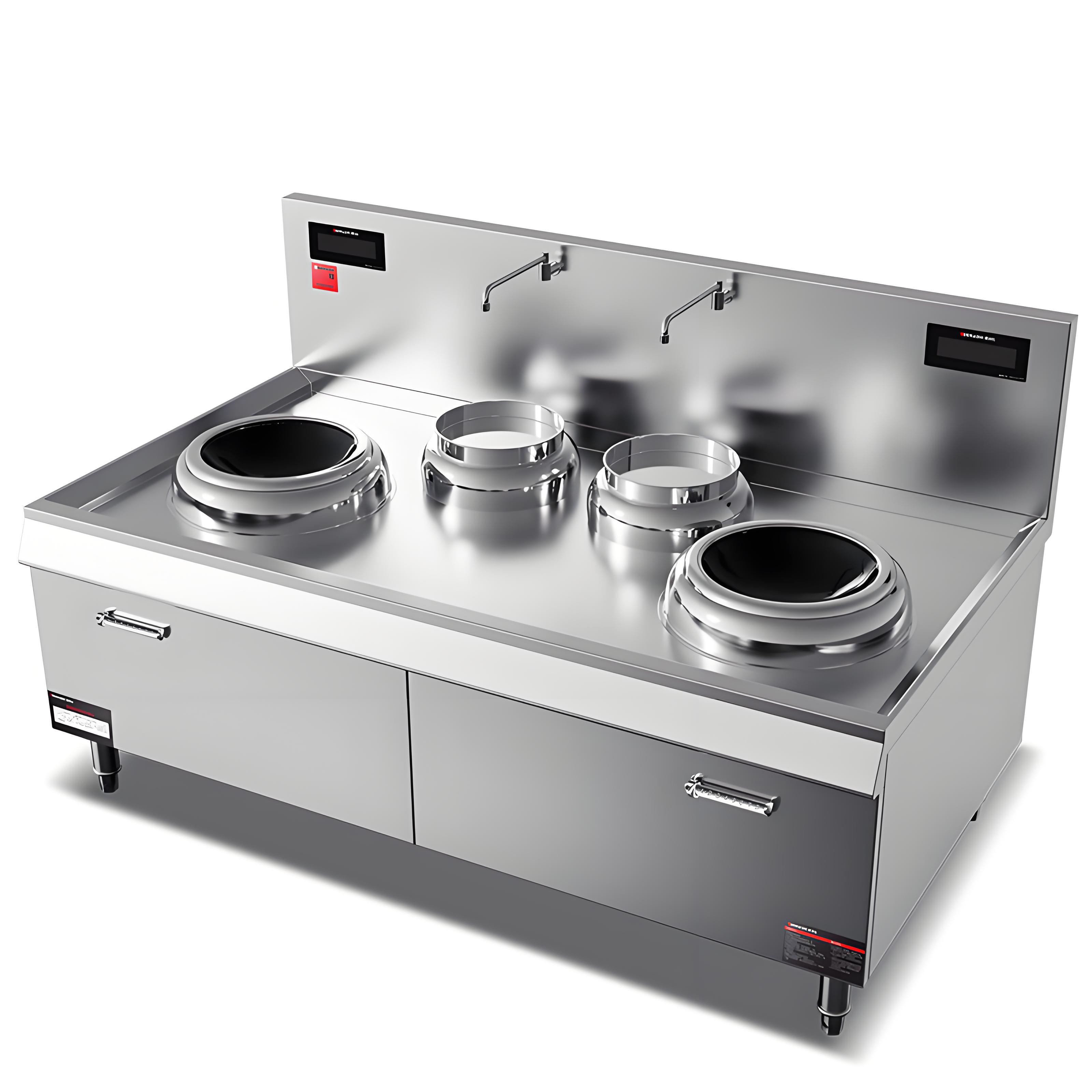
Proper Use
Train your kitchen staff on the proper use of the commercial induction cooker. Teach them to avoid slamming the buttons or knobs on mechanical switches, as this can accelerate wear and tear. For touch – sensitive switches, remind them to keep their fingers clean and dry to ensure proper touch detection.
Also, encourage staff to be mindful of spills and splashes around the cooker and to clean them up immediately to prevent water or moisture damage.
Environmental Control
Try to control the environmental conditions in the kitchen as much as possible. Use exhaust fans to reduce humidity and steam. Keep the induction cooker away from areas where there is a lot of water or moisture, such as near sinks or dishwashers.
If possible, install a protective cover over the induction cooker when it’s not in use to shield it from dust and debris.
Related Questions and Answers
Q1: How much does it cost to replace a commercial induction cooker switch?
A: The cost of replacing a commercial induction cooker switch can vary depending on several factors, such as the model of the cooker, the type of switch, and where you purchase the replacement part. On average, you can expect to pay anywhere from 100 for the switch itself. If you hire a professional to install it, there will be additional labor costs, which can range from 150 or more, depending on the complexity of the installation and the rates in your area.
Q2: Can I use a universal switch to replace a faulty one on my commercial induction cooker?
A: It’s generally not recommended to use a universal switch to replace a faulty one on a commercial induction cooker. Commercial induction cookers are designed with specific electrical requirements and control systems. A universal switch may not be compatible with your cooker’s electronics, which could lead to further problems or even damage to the cooker. It’s best to purchase a replacement switch that is specifically designed for your model of induction cooker from the manufacturer or a reputable supplier.
Q3: How often should I clean the switch on my commercial induction cooker?
A: The frequency of cleaning the switch on your commercial induction cooker depends on how often it’s used and the conditions in your kitchen. In a busy commercial kitchen, it’s a good idea to clean the switch at least once a week. However, if you notice that there is a lot of dust, debris, or food particles around the switch, you should clean it more frequently. A quick wipe – down with a clean, dry cloth after each use can also help keep the switch clean and prevent buildup.
Q4: What should I do if I’m not sure what’s causing the switch failure on my commercial induction cooker?
A: If you’re not sure what’s causing the switch failure on your commercial induction cooker, it’s best to contact a professional service technician. They have the knowledge, experience, and tools to diagnose the problem accurately and recommend the appropriate solution. Trying to fix the problem yourself without knowing the cause could potentially make the situation worse or even cause further damage to the cooker.
Q5: Can a power surge cause a commercial induction cooker switch to fail?
A: Yes, a power surge can potentially cause a commercial induction cooker switch to fail. A power surge is a sudden increase in voltage that can occur due to lightning strikes, power outages, or problems with the electrical grid. When a power surge occurs, it can damage the electrical components of the induction cooker, including the switch. To protect your induction cooker from power surges, you can install a surge protector. A surge protector will help to regulate the voltage and prevent damage to the cooker’s electronics.
In conclusion, a switch failure in a commercial induction cooker can be a frustrating problem, but by understanding the common causes, knowing how to diagnose the issue, and taking appropriate solutions and preventive measures, you can keep your induction cooker running smoothly. Whether you’re a restaurant owner, a chef, or a kitchen manager, these tips will help you ensure that your commercial induction cooker is always ready for action.
